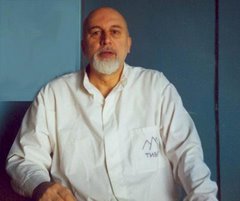Being with the Teacher absorbing the remarkable wisdom, learning about the meaning of existence Alid Faski Natva was trying to grasp the existence of subtle worlds and thought about the mysteries of creation. The human form is weak and short-lived; the spirit is eternal and free. Nothing disappears into nowhere in nature and in the same way the spirit which leaves the body does not just disappear it goes to the Creator. During his lifetime a human being is suppose to grow and develop, i.e. to rise to a higher spiritual level. All this is an external and internal expression of his essence: kindness, willingness to help his fellow humans, selflessness, honesty. Many of those qualities Alid Faski Natva could see in Indian people. He liked their kindness and gentleness. Their everyday lives were quite simple. They were observing the traditions of their ancestors and were quite religious. In
Hinduism is the most popular religion in
Apart from Hinduism, Muslim, Buddhism, Judaism and Christianity there are a lot of other religions and sects. Sect of Djaina, for example, reveres any expression of life. Being outdoors some of them would cover their nose and mouth with a net in order not to inhale an insect, as this would destroy its life.
In a big variety of Hindu Gods and temples there is a temple dedicated to a God of dances, witch has a dancing statue in the middle of it. A great dancer lives in that temple. She dances very rarely only on occasions like religious holydays and only in this temple. Indian dances are unique. Classical rules of Indian dance are being passed down from generation to generation. Special poses, positions of fingers, eye movements and facial expressions are being observed. Every gesture has its own meaning. Many dances have their ceremonial, ritualistic meaning. The Teacher accompanied by his student visited a temple of dances.
An amazing dancer rushed to great the Teacher and his student. Musicians came out and a solo instrument’s sounds were heard; than the soft sounds of drums joined in. The mesmerizing music echoed off the walls of the temple. At the pedestal of the Goddess of dance statue the dancer started to perform her unique dance. When she moved the golden jewelry on her arms and ankles would add a soft tinkle to the music.
Alid Faski Natva watched this breathtaking performance. The rhythm of movements was so remarkable that it was impossible to take the eyes of her from her first move to the last one; that’s how strong the power of her performance was.
Yet one more big yoga school the High Teacher and his student had visited. It had almost a thousand of students. The school was situated in one of the most scenic spots in
They escorted the High Teacher and his student to the enlightened woman. The woman looked about forty: dark piercing eyes, slightly dark and smooth skin, fresh natural colors of her face. Beautiful lips and eyebrows were curved very distinguishably. She was one hundred years old! Observing the hierarchical subordination - she bowed to the teacher putting her arms in a traditional gesture, greeting him. She looked carefully at Alid Faski Natva and bowed to him too.
Alid Faski Natva was observing with interest their conversation, he already knew about her special gifts and her methods of enrolling people into the school. Unlike other yoga schools they don’t do interviews. Applicants send their photos which then are kept in a closed room for a few days. Why is it done this way no one knows, it is not a custom to ask questions. It could be that it was loosing the unwanted information about the person. Then the enlightened woman looks at the photos and tells who needs to be accepted and who does not.

